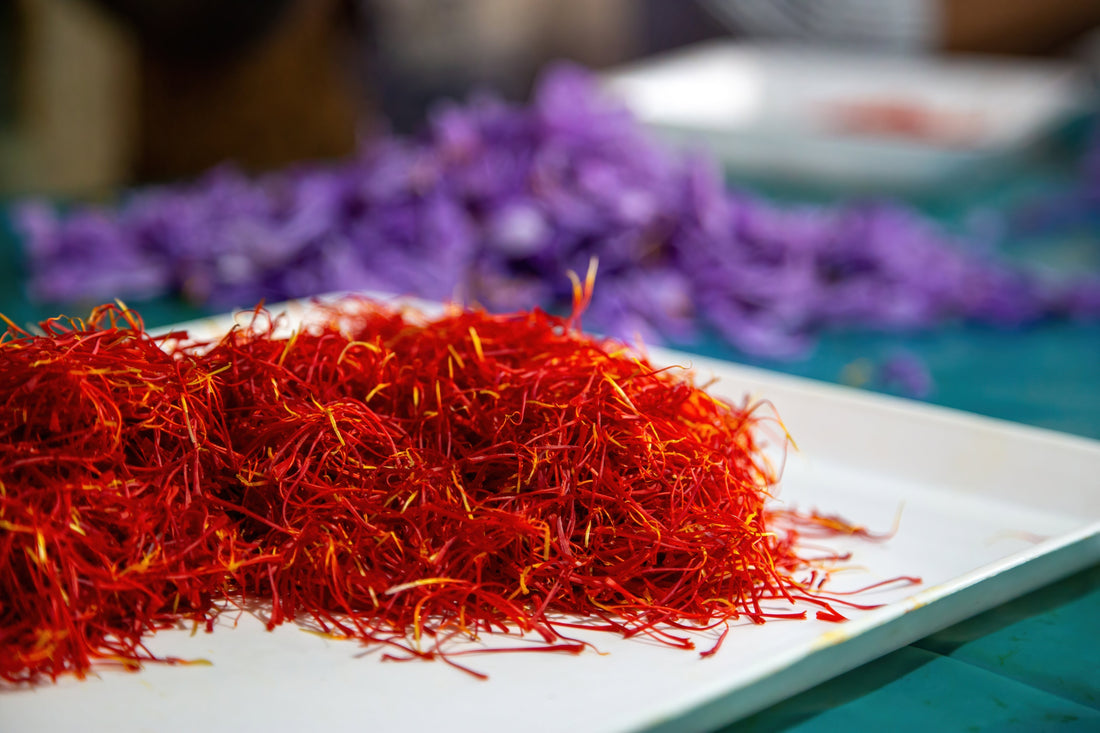
Drying saffron: Crocus sativus becomes spice
Share
After the saffron flowers are carefully harvested at dawn, the journey of Crocus sativus continues with one of the most critical steps: drying the stigmas. This stage is where fresh saffron threads are transformed into the rich, fragrant spice known across the world.
Delicate and precise, the drying stage locks in saffron’s intense color, aroma, and flavor—and ultimately determines its quality.
What happens during the drying stage?
Once harvested, each saffron flower is gently opened by hand to remove its three red stigmas. These fragile threads must be dried quickly and carefully to prevent degradation.
Drying reduces the moisture content, concentrates the essential compounds, and ensures long-term preservation. If done right, the result is pure, high-grade saffron—ready to be stored, sold, or used.
Saffron drying techniques: traditional and modern methods
There are several saffron drying techniques used around the world. Each method must strike a balance between efficiency and quality retention:
1. Low-heat drying (traditional method)
Saffron threads are spread on a fine mesh and dried near a gentle heat source, such as a wood stove or charcoal fire. This slow method is used in traditional saffron-growing regions like Iran and Kashmir and can take several hours.
2. Electric dehydrator or oven drying
Temperature-controlled drying (typically around 35–45°C / 95–113°F) ensures consistency and reduces the risk of overheating. It’s ideal for small to medium batches and helps preserve color and aroma.
3. Sun drying (not recommended commercially)
In some regions, saffron is sun-dried. However, this method can lead to uneven results and loss of aroma, as saffron is sensitive to UV exposure.
4. Industrial saffron drying
For large-scale operations, specialized saffron dryers ensure precise timing, temperature, and humidity control. This allows for consistent, high-quality saffron with minimal manual handling.
Whichever technique is used, the goal is always the same: to preserve the crocin (color), safranal (aroma), and picrocrocin (flavor)—the compounds that make saffron so valuable.
Why drying matters so much
The drying stage doesn’t just preserve saffron—it defines it. The moisture is removed, but the compounds responsible for saffron’s color (crocin), aroma (safranal), and flavor (picrocrocin) are concentrated and stabilized.
Well-dried saffron is:
- Deep red with slight orange tips
- Strongly aromatic
- Potent in flavor, even in small amounts
Poor drying, on the other hand, results in pale, weak, or musty saffron—and a serious loss of value.
The drying stage of saffron cultivation (October–November) is where craftsmanship meets chemistry. With the right technique, freshly picked Crocus sativus stigmas are carefully transformed into the golden threads cherished by chefs, healers, and spice lovers around the world.
Handled with precision, this delicate process ensures that every thread of saffron carries its full intensity—bright, fragrant, and powerful in every pinch.
